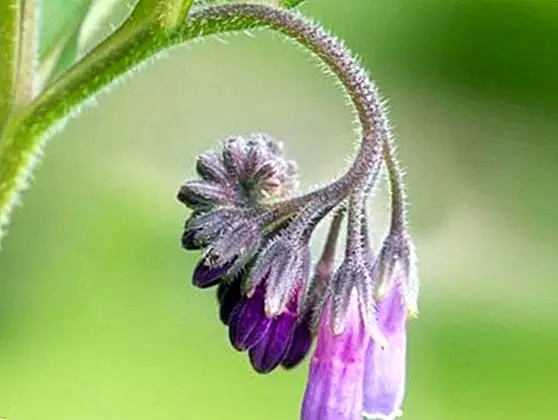What to do before a bee sting
With the arrival of spring, and especially with the arrival of good weather, we tend to spend more time outdoors outside the home. Due to this, during this time of the year, the bee stings, being more common precisely because there is more pollen and both bees and wasps are more active.
At the time when a sting occurs, and the wasp or bee stings the person, One of the most common reactions is to feel intense pain. Then, a few minutes later, a papule appears (a reddish rise of the skin with a central point that arises at the point where the insect stung), accompanied by redness and swelling. It is a normal reaction that is usually of short duration, which pain can be more or less intense depending on the place followed by finally itching which tends to last a few hours.

These symptoms appear quickly after the sting, resolving in a few hours. This reaction is a response of the tissues to the components of the poison injected by the bee or by the sighted, which has a high power both pharmacological and enzymatic and that ultimately is not the result of the addition of various substances in their vast majority toxic.
What do I do if a bee stings me and I'm allergic?
Although the symptoms that appear after a bee sting are usually annoying and painful but in reality they disappear within a few hours, the problem arises when the person presents a bee sting allergy. This reaction usually appears in people who are sensitized to bee venom, which means that it is acquired over time, its appearance being more common when a previous bite has already occurred.
This means that If you have never been bitten by a bee, you will not develop an allergy, so that the sensitization and therefore the allergic reaction will tend to appear especially if an insect of this type has already bitten you previously, since it is from this first bite when in some people their immune system is activated with the order to produce allergy.

An allergic reaction may be suspected when reactions occur in places other than the bite, affecting different parts of the body. For example, when a bee stings in one hand and the lips or eyelids swell. Also when it appears difficult to breathe, you want to vomit with dizziness, urticaria ... Before the sting of a bee you must quickly extract the sting otherwise, it will continue to inject poison. To get it the safest way is to scrape with the nail or with a blunt object (for example a credit card). Then go quickly to the nearest medical center.
There are certain medical treatments that can be useful in these cases while we arrive at the medical center:
- Inhaled bronchodilators: help to open the airways, and are essential to treat respiratory distress.
- Adrenaline autoinjectables: if several symptoms appear at the same time (such as difficulty swallowing, hives with choking, dizziness, vomiting ...) it means that an anaphylaxis is taking place. In this case the only treatment is adrenaline.
What if I'm not allergic but a bee stings me? What I can do?
1. Extract the sting
Whether you are allergic to a bee sting or not you must quickly extract the sting, since otherwise it will continue to inject poison into your body. To get it easier you can scrape the area of the bite with a fingernail or with a credit card.
You should avoid using tweezers since then you would squeeze the poison sac and inject it faster.

2. Wash the area of the sting
It is very useful wash the area where the bee sting has been produced with soap and water.
3. Apply ice
Ice helps reduce swelling and relieve pain. To apply it, wrap some ice cubes in a cloth and put it on the bee sting, letting it act for 20 minutes. You will observe how the discomfort disappears little by little. It is also useful to prevent toxins from spreading throughout the body.
However, if the pain comes back again you can apply ice again after a few hours.
4. Natural honey remedy
If you are looking for a simple natural remedy that helps relieve the bite, you can apply honey. It is a natural option that helps keep the area cool, with a mild tingling that will also relieve the bite for 30 to 45 minutes. To apply it you only have to put some honey between your fingers and then pass it over the bite with the help of a gentle massage.

5. Natural antiseptic solution
If you want to elaborate a natural antiseptic to help you wash the area you can mix in a bowl 2 teaspoons of tea tree essential oil and 2 teaspoons of witch hazel extract. Then apply on the burn.
Images | John Flannery / allison / ADAM / Evan Bench This article is published for informational purposes only. It can not and should not replace the consultation with a Physician. We advise you to consult your Trusted Doctor.


